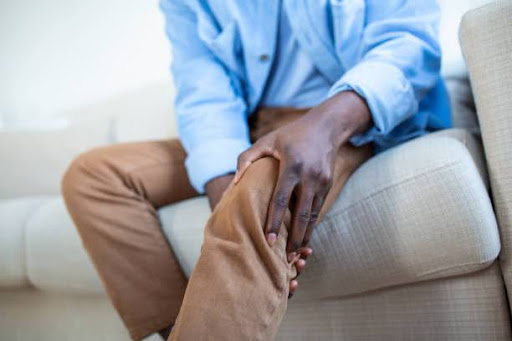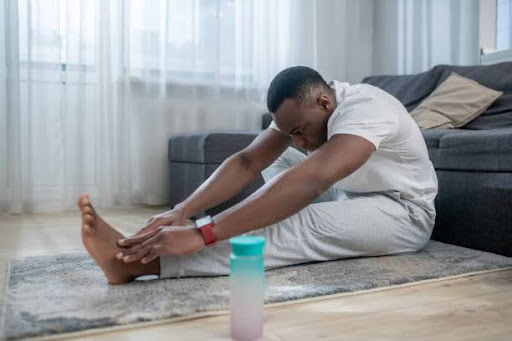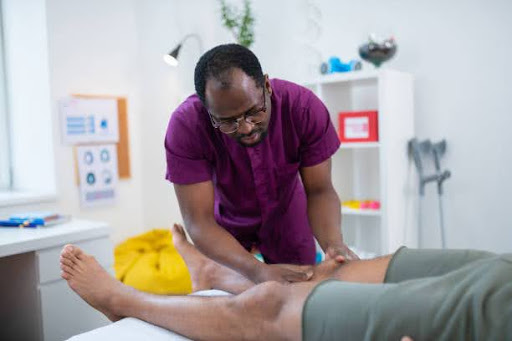Joint pain can be a real party pooper. One minute you’re enjoying life, and the next, you’re wincing with every step or struggling to lift your arm. Whether it’s a minor ache or a persistent throb, joint pain is your body’s way of signaling that something needs attention. So, what exactly is your body trying to say, and how should you respond? Let’s break it down.

1. Why Your Joints Hurt: Common Causes of Joint Pain
Joint pain can stem from various causes, from minor injuries to more serious health conditions. Here’s a rundown of some common culprits:
- Arthritis: This is a big one. Arthritis, especially osteoarthritis and rheumatoid arthritis, is a leading cause of joint pain. Osteoarthritis occurs due to wear and tear on the cartilage that cushions your joints. Rheumatoid arthritis, on the other hand, is an autoimmune condition where the body’s immune system mistakenly attacks the joint lining.
- Injury or Overuse: Joint pain can also result from injuries like sprains, strains, or fractures. Overusing a joint—like typing all day or running without proper form—can lead to inflammation and pain.
- Inflammation: Conditions like bursitis (inflammation of the fluid-filled sacs that cushion the joints) or tendinitis (inflammation of tendons) can cause significant joint pain.
2. How to Respond: Steps to Address Joint Pain
So, how should you respond when your body sends these SOS signals? Here are some steps to help you take control of joint pain:

- Rest and Ice: For acute injuries or flare-ups, resting the affected joint and applying ice can help reduce inflammation and pain. Use an ice pack for 15-20 minutes several times a day.
- Gentle Exercise: While rest is essential, too much inactivity can make joint pain worse. Low-impact exercises like swimming, walking, or cycling can help maintain joint flexibility and strength. Gentle stretching or yoga can also improve joint mobility.
- Over-the-Counter Pain Relievers: Medications like ibuprofen or acetaminophen can help manage mild to moderate joint pain. However, these should be used as directed and not relied upon long-term without consulting a healthcare professional.
- Maintain a Healthy Weight: Carrying extra weight puts additional stress on your joints, especially your knees, hips, and lower back. Losing even a small amount of weight can significantly reduce joint pain and improve mobility.

- Seek Professional Help: If your joint pain persists, worsens, or is accompanied by other symptoms like fever, significant swelling, or unexplained weight loss, it’s time to see a doctor. They can help diagnose the cause and recommend appropriate treatments, such as physical therapy, medications, or other interventions.
No dey use ‘siddon look’ for joint pain. If e dey too much, see doctor quick-quick make dem check am well.
3. Long-Term Management and Prevention
Managing joint pain isn’t just about addressing the immediate discomfort; it’s also about long-term strategies to keep your joints healthy:

- Stay Active: Regular physical activity keeps your joints flexible and muscles strong, which helps support and protect your joints. Opt for low-impact activities that won’t strain your joints, like swimming or cycling.
- Watch Your Posture: Good posture reduces unnecessary strain on your joints. Whether sitting, standing, or lifting, proper body mechanics can prevent overuse and injuries.
- Have a Joint-Friendly Diet: A balanced diet rich in anti-inflammatory foods can help reduce joint pain. Omega-3 fatty acids found in fish, flaxseeds, and walnuts help fight inflammation. Calcium and vitamin D are crucial for bone health, so include dairy products, leafy greens, and fortified foods in your diet.
To keep your joints in top shape, no be magic. Dey active, chop better food, and maintain correct posture.

Conclusion
Joint pain is a signal from your body that it needs attention. Whether it’s a temporary ache or a persistent issue, understanding the root cause and responding appropriately can help you manage the pain and maintain a good quality of life. Don’t ignore the signs—taking proactive steps can make a big difference in your joint health.
Your body dey try tell you something when joint dey pain. Pay attention, respond well, and you go see improvement. So, the next time you feel that nagging joint pain, remember: your body is talking to you. Listen, take action, and give your joints the care they need to keep you moving and grooving through life.

